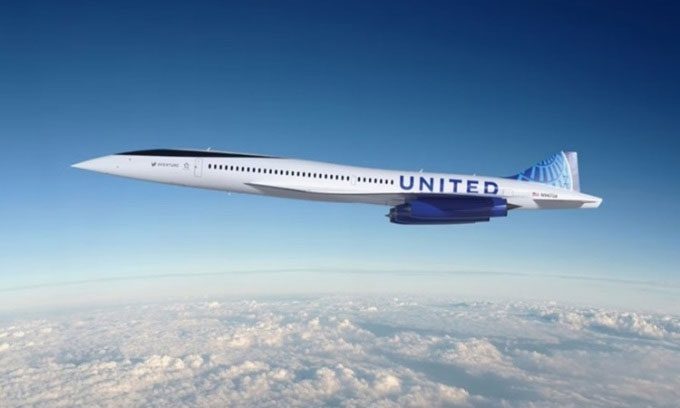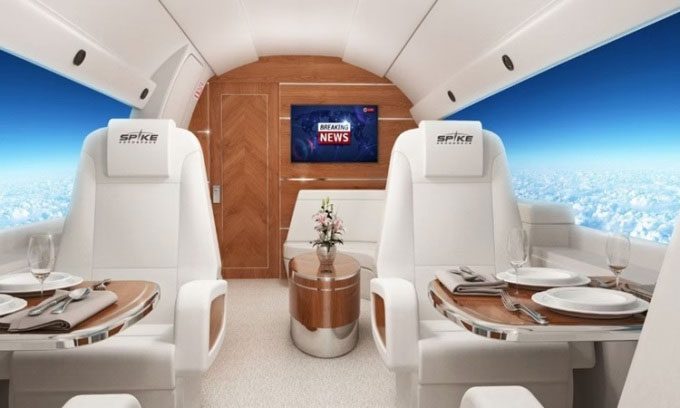A long time after the Concorde aircraft ceased operations, commercial companies are now developing new models of supersonic passenger airplanes.
A supersonic aircraft can fly at speeds faster than the speed of sound (Mach 1 or 1,235 km/h). As of 2024, only two commercial supersonic airplanes have been operational, and both have since been retired (the Concorde and Tupolev Tu-144). Safety concerns and challenges related to sonic booms have made the commercial viability of passenger supersonic aircraft extremely difficult. However, an increasing number of supersonic airplanes are currently under development, with Boom leading the way, according to Simple Flying.
1. Boeing 2707
The American company Boeing once had its own supersonic passenger aircraft project in the 1960s, known as the Boeing 2707. The Boeing 2707 was America’s response to the European Concorde, aiming to be a larger and significantly faster aircraft than the Concorde.
The design of the Boeing 2707 allowed for the transport of 250 to 300 passengers. According to Boeing, the aircraft had a cruising speed of 3,334 km/h at an altitude of over 18,288 meters. The project faced escalating costs and a lack of a clear market (despite 26 airlines ordering 122 aircraft). Ultimately, the project was canceled in 1971 before any prototypes were completed.
2. Concorde
The Concorde is perhaps the most famous supersonic passenger jet. A collaboration between the French company Sud Aviation and the British company British Aircraft Corporation, the Concorde became a point of pride for the aviation engineering of both countries. The concept for the Concorde began in 1954, with its first flight occurring in 1969 in France. The aircraft could carry up to 100 passengers at a speed of 2,519 km/h.

Concorde could not operate over land due to the loud sonic boom. (Image: Simple Flying).
At the time, manufacturers predicted that the market would need around 350 aircraft, but ultimately, the only customers were British Airways and Air France, with just 20 aircraft being produced. This was due to the lack of flight routes (as it was only used for transoceanic flights) because sonic booms were banned over land. However, according to the National Air and Space Museum, the Concorde flew 17,824 hours over 25 years, transporting thousands of passengers across the Atlantic.
3. Tupolev Tu-144
The Soviet Union hurriedly developed its own commercial supersonic aircraft to compete with the West, named the Tupolev Tu-144, which had a capacity of 150 passengers. The Tu-144 took its first flight a few months before the Concorde from the UK and France. However, the Tu-144 was even less commercially successful than the Concorde. Only 16 aircraft were produced, completing 102 commercial flights, of which 55 were passenger flights at a speed of 2,470 km/h.
The Tu-144 had a disastrous start when the first Tu-144S crashed at the Paris Air Show in 1973. The aircraft began commercial passenger flights in 1977, but another accident in 1978 ended the Tu-144’s passenger service. The aircraft switched to cargo transport until its retirement in 1983. It was used for training in the Soviet space program and made its final flight in 1999.
4. Boom Overture
The era of supersonic flight may return with the development of Boom Overture. According to Boom, this aircraft is slower and smaller than previous supersonic passenger jets, with a cruising speed of 2,100 km/h and a capacity of 64 to 80 passengers, depending on the configuration. The company states that there are over 600 profitable flight routes available. United Airlines has also announced plans to purchase 15 Boom Overture aircraft, with the option to order an additional 35.

The Boom Overture supersonic aircraft successfully completed test flights in early March. (Image: Boom).
In 2024, the final assembly line for the Boom Overture will be completed. The aircraft is expected to begin passenger service in 2029 and will use 100% sustainable aviation fuel.
5. Spike Diplomat Supersonic Business Jet
The Spike Diplomat Supersonic Business Jet is another developing supersonic passenger jet. This aircraft differs from those mentioned above in that it is a business jet. Spike is designed for long-haul flights for private customers willing to pay for a reduction of more than 50% in flight time.

Luxurious interior design of the Spike supersonic aircraft. (Image: Spike Aerospace).
If built, the aircraft will fly at a speed of 1,976 km/h, faster by 805 km than any civil jet and carry 12 to 18 passengers. The aircraft will not have windows in the passenger cabin. Instead, it will integrate cameras providing external views. The interior will be extremely luxurious, with spacious accommodations for a limited number of passengers.


















































